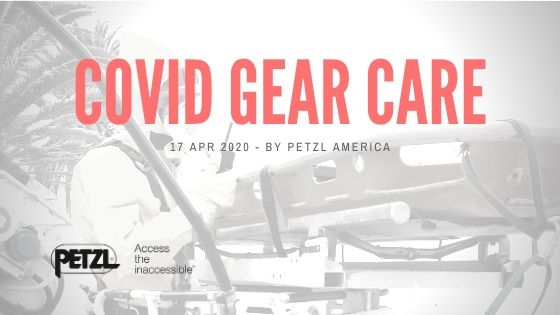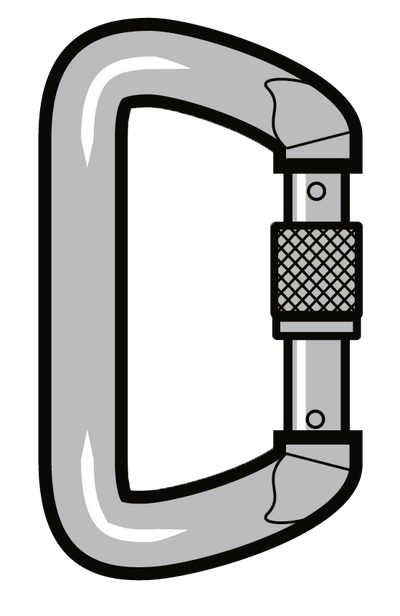Confined Spaces Continue To Be Deadly Spaces
The OSHA FatalFacts newsletter, published by the US Department of Labor recently released another report on a fatality in a confined space. This shows, yet again, how a lack of appreciation for confined spaces can result in catastrophic ends.

Picture this; you're a competent worker with a construction outfit, it's Monday and you're going back to work on some new manhole installations after a week away working on other projects. The sun is shining and, along with two other workers and the foreman, you're getting ready for the day. You check your tools, make sure you have the supplies you need, probably a coffee as well before you look to the foreman to see where you are going to start working for the day. Problem is, the foreman isn't standing nearby anymore.
You look around and don't immediately see him so you wait another minute or two in case he had to use the washroom or something and stepped away. Now it's been a few more minutes and you and your co-workers are calling out to him, asking where he is and what's happening. No answer.
Now it's time to look around so you walk out to have a look around the grounds and notice one of the covers on one of the manholes has been pulled aside. You look in and see what you think is your foreman at the bottom of the manhole and you call out to him. He doesn't respond or even move.
You begin to call emergency services and one of your coworkers decides to climb down to check on the foreman while your last coworker stays at the top of the hole to keep an eye on the would-be rescuer. You're trying to explain to EMS what is happening but you don't know whether the foreman had a medical issue, whether he slipped or whether there is something in the space that has caused him to stop responding so the information you can give is extremely limited.
At this point you hear from your hole attendant that the rescuer isn't feeling well, is getting light-headed and is having trouble coordinating himself at the bottom of the hole. Everyone's worst fears are coming to life, the atmosphere in the space is dangerous and now you have not one but two people in danger.
~
These situations occur far too frequently and could be avoided with proper training in Confined Space dangers and awareness. Had anyone analyzed the space before entry, they likely would have seen an oxygen-deficient, carbon dioxide-rich atmosphere and ventilated properly before making entry. As it was, whether due to time constraints or just a lack of appreciation for the danger, a 46 year old site foreman with 15 years experience on the job lost his life due to atmospheric conditions in a newly-installed manhole.
"Why was the space so dangerous?" The simple fact is, confined spaces can change so quickly and so insidiously that if you drop your guard for a second, it can be disastrous. Atmospheric issues account for the majority of confined space casualties, many of these being rescuers, and this is a stark reminder of how quickly they can arise. In so many cases, if the event is caused by an atmospheric issue, there are almost always multiple casualties involved
"What caused the atmosphere to change?" This is a question that is extremely hard to answer and which we can spend ages going over. This manhole system wasn't yet connected to the main sewer line however, despite this, there was enough activity to cause a lethal change in atmosphere. Whether caused by decaying material, soil microsomes, mechanical exhaust or any other unexpected source, post-incident investigation showed that it only took 4 days for the atmosphere to drop to 7.7% oxygen.
"How do we avoid this in the future?" This is, perhaps, the best question anyone can ask. Proper training in confined space awareness for anyone who works in areas of risk, training in confined space hazards and proper entry procedures for anyone expected to work in a confined space and an effective, documented plan for the provision of rapid rescue are the cornerstones of a successful, safe confined space plan. If you are a worker, educate yourself through a course or even online readings, if you are the H&S representative for a group of workers, get a dedicated CS policy in place and commit yourself to the safety of your crews and, if you don't know where to start, call us and we will point you in the right direction.
Our hearts and prayers go out to the families involved in this tragedy and hope that we, as a safety community, can prevent similar incidents in the future. Our mission is to increase the safety of every worker we come in contact with so reach out if you have concerns. We'd much rather answer your call or read your email than to get articles like this one.
Be safe out there,
Dynamic Rescue
Also in Blog

Check This Out - Freakin' Beacon
The "Freakin' Beacon"
User feedback was the driving force behind this design, Koehler BrightStar tells us, and it was important to have a product that was lightweight, durable and bright.
Weighing in at just 97 grams (yes, that includes 2x AAA batteries) and less than 7cm long, this unit is amazingly powerful for its small size.

RECOMMENDATIONS FOR DISINFECTING YOUR EQUIPMENT - Petzl
During the current COVID-19 crisis, many of you have sent us questions on how to disinfect your equipment. Here are the basics that you need to know.


